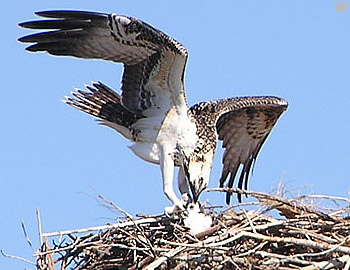
Osprey (Pandion haliaetus), Everglades National Park. |
Florida, part 15: Other landbirds
Birds of prey are surprisingly diverse in Florida: at least 18 species breed, winter, or migrate through its woodlands and open landscapes. Even in cities, you can regularly see hawks, kestrels and vultures.

Black vulture (Coragyps atratus), Lake Okeechobee. |
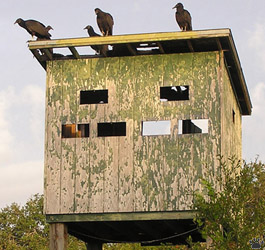
Observation tower, Lake Woodruff National Wildlife Refuge. |
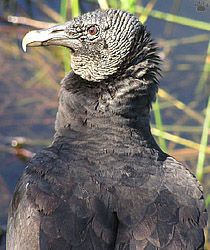
Black vulture, ENP. |
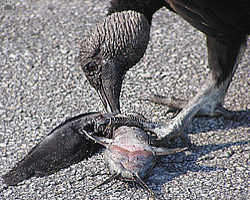
Black vulture, ENP. |
Vultures are particularly common in winter, when they feed on roadkill and fish from drying ponds. Black vultures have acute sense of smell, so they are usually the first to arrive to carrion. Then turkey vultures take over if they manage to get there fast enough. |
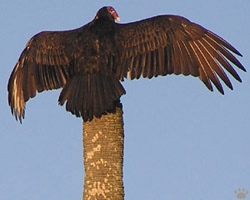
Turkey vulture (Cathartes aura), Lake Okeechobee. |
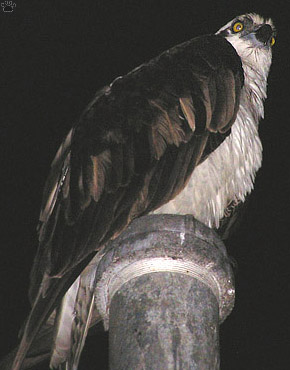
Osprey, ENP. |
Florida is probably the best place in the world to watch ospreys. They nest along all shores and on large inland lakes, often in colonies. If there are no tall trees along the coast, they'll nest on antennas and even buildings. There presence is a good sign: it means there's plenty of fish around. |
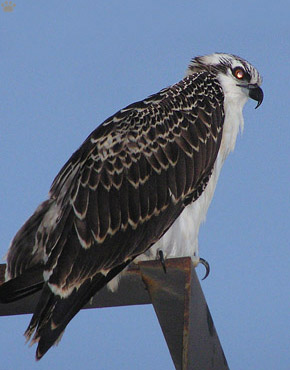
Osprey, ENP. |
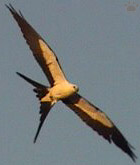 |
 |
 |
 |
 |
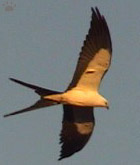 |
| Swallow-tailed kites (Elanoides forficatus), Highlands Hammock State Park. This predominantly tropical species is only present in Florida from May to July, when cicadas, its main food, are abundant in tall hardwood forests. |
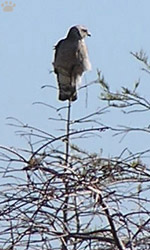
Short-tailed hawk (Buteo
brachyurus), ENP. |
Three tropical species - short-tailed hawk, snail kite, and crested caracara - survive in small, relictual populations in central or southern Florida, isolated by hundreds of miles from the main ranges of these species.
|

Snail kite (Rostrhamus
sociabilis), ENP. |

Bald eagle (Haliaetus leucocephalus),
Corkscrew Swamp Sanctuary. |

Crested caracara (Polyborus plancus),
Miccosukee Indian Reservation. |
| Most other raptors of Florida, such as the bald eagle, are widespread northern species at the southern limit of their range. Fall raptor migration can be spectacular, especially at the Keys. |
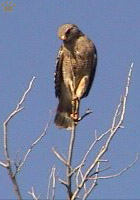 |
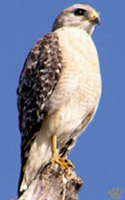 |
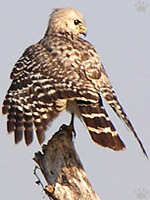 |
 |
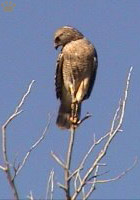 |
| Red-shouldered hawks (B. lineatus), Arthur R. Marshall Loxahatchee National Wildlife Refuge. |

Red-shouldered hawk, ARMLNWR. |
Red- shouldered hawk is common in all types of forests, and also in many residential areas. It hunts frogs, large insects, mice, small birds and snakes. |
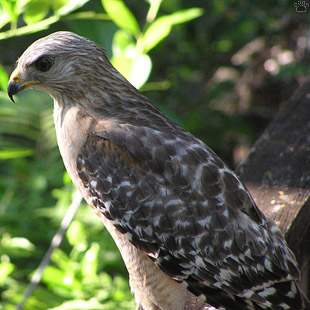
Red-shouldered hawk, HHSP. |
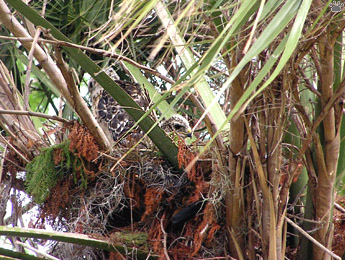 |
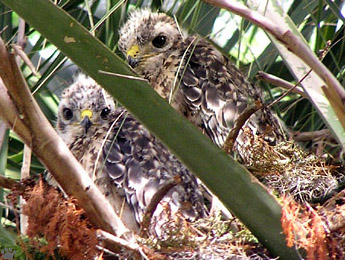 |
| Nest of red-shouldered hawk, ARMLNWR. |
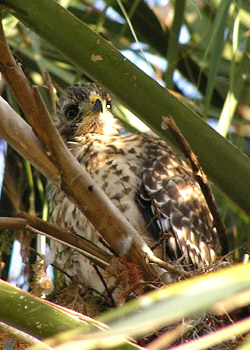
Half-grown chick at the nest, ARMLNWR. |
Sometimes it nests in low trees, providing a rare chance to get a close-up view of the chicks.
|
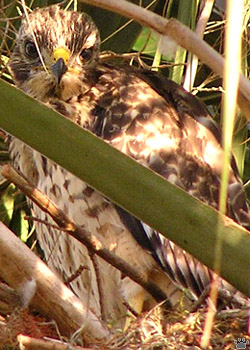
Half-grown chick at the nest, ARMLNWR. |
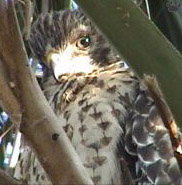
Red-shouldered hawk chick, ARMLNWR. |
| Unfortunately, by the time I found this two, they were almost ready to fledge. |
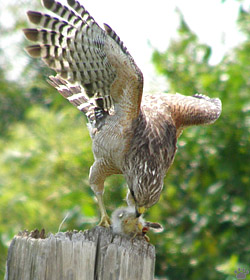
Red-shouldered hawk eating an egret chick, ENP. |
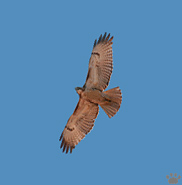
Red-tailed hawk (B. jamaicensis), Ichetucknee Springs State Park. |

Red-shouldered hawk eating an egret chick, ENP. |
| Red-tailed hawk is more common in northern Florida. |
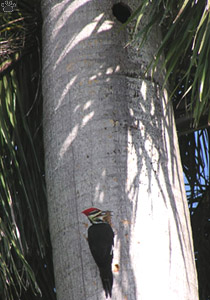
Pileated woodpecker,Matheson Hammock State Park |
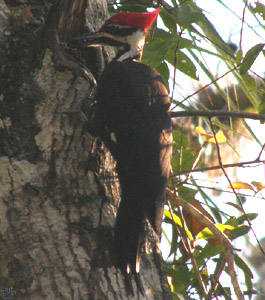
Pileated woodpecker (Dryocopus pileatus), HHSP. |

Pileated woodpecker, MHSP. |

Pileated woodpecker, MHSP. |
Pileated woodpecker is the largest in Florida. Once a rarity, it has recently adapted to urban landscape. Its even larger and more specialized relative, the ivory-billed woodpecker (Campephilus principalis) became extinct in the 20th century. |

Pileated woodpecker, MHSP. |
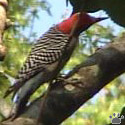
Red-bellied woodpecker
(Melanerpes carolinus), Miami. |
 |
 |
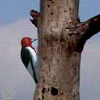 |
 |
 |
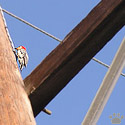
Red-bellied woodpecker
on a utility pole, Miami. |
Downy woodpecker (Picoides
pubescens), Key Largo Hammocks
State Botanical Site. |
Red-headed woodpecker
(M. erythrocephalus),
Archbold Biol. Station. |
Yellow-bellied sapsucker
(Sphyrapicus varius),
Key Largo Hammocks SBS. |
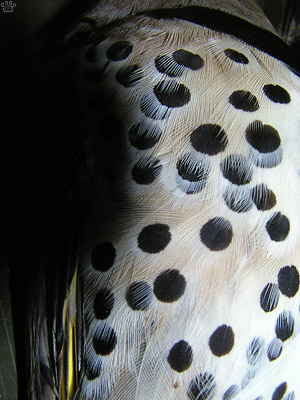
Chest feathers of a northern flicker (Colaptes auritus), ABS. |
Of the seven smaller woodpecker species, five are habitat generalists. Red-bellied woodpecker is particularly common, in cities as well as in remote woods. Yellow-bellied sapsucker, a winter visitor, is also common, but quiet and difficult to see. |

Red-bellied woodpecker, ENP. |
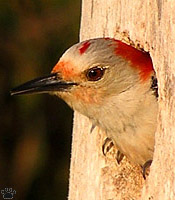 |
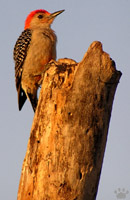 |
 |
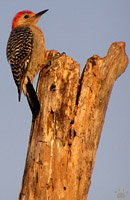 |
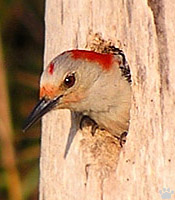 |
| Red-bellied woodpeckers, ENP. |
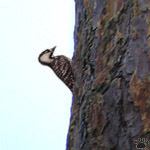
Red-cockaded woodpecker
(P. borealis), Platt Branch
Mitigation Park. |
Two species are confined to pine forests. They use opposite tactics to protect their nests from snakes. Read-headed woodpecker nests in recently burned areas, in dead pine trees with no bark, which are too smooth for snakes to climb. Red-cockaded woodpecker nests in live pines. He makes numerous small holes around the nest opening, so the tree becomes covered with flowing resin. Only two species of pine, particularly the longleaf pine (Pinus palustris) produce enough resin for adequate snake protection. |
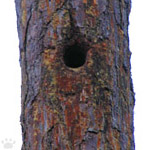
Nest of red-cockaded woodpecker
surrounded by resin flows,
PBMP. |
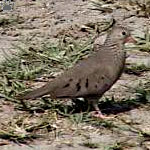
Common ground-dove (Columbina
passerina), MIR. |
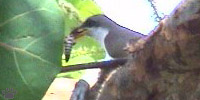
Yellow-billed cuckoo (Coccyzus
americanus), ARMLNWR. |
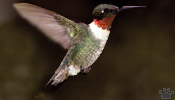
Ruby-throated hummingbird (Archilochus
colubris), Castellow Hammock. |
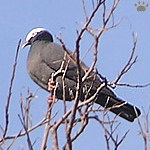
White-crowned pigeon (Columba
leucocephala), KLHSBS. |
| Florida has numerous pigeons and four cuckoo species, but hummingbirds are relatively rare. |
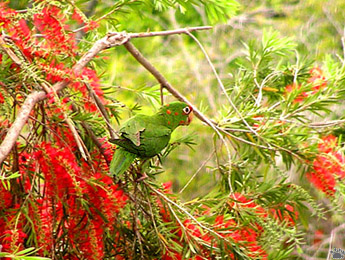 |
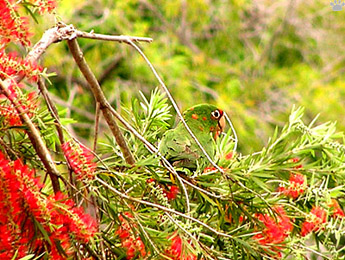 |
| Mitred parakeets (Aratinga mitrata) in an bottlebrush tree (Callistemon sp., also introduced), Kendall. |
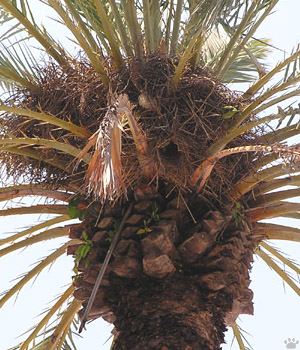
Colonial nest of monk parakeets (Myiopsitta monachus), Miami Beach. |
Numerous species of parrots and parakeets have been introduced to Florida, but most are still confined to Miami area. Large night roosts are used by thousands of birds. You can even see macaws sometimes. |
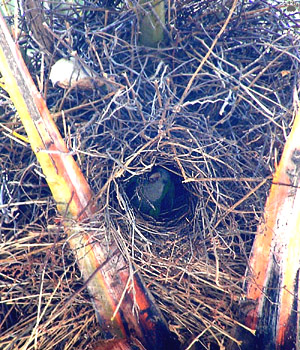
Monk parakeet in its nest, Miami Beach. |
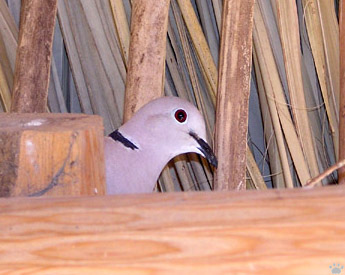
Eurasian collared dove (Streptopelia decaocto) on a nest, MIR. |
Part 16. Songbirds
Back to Part 14
Home
|